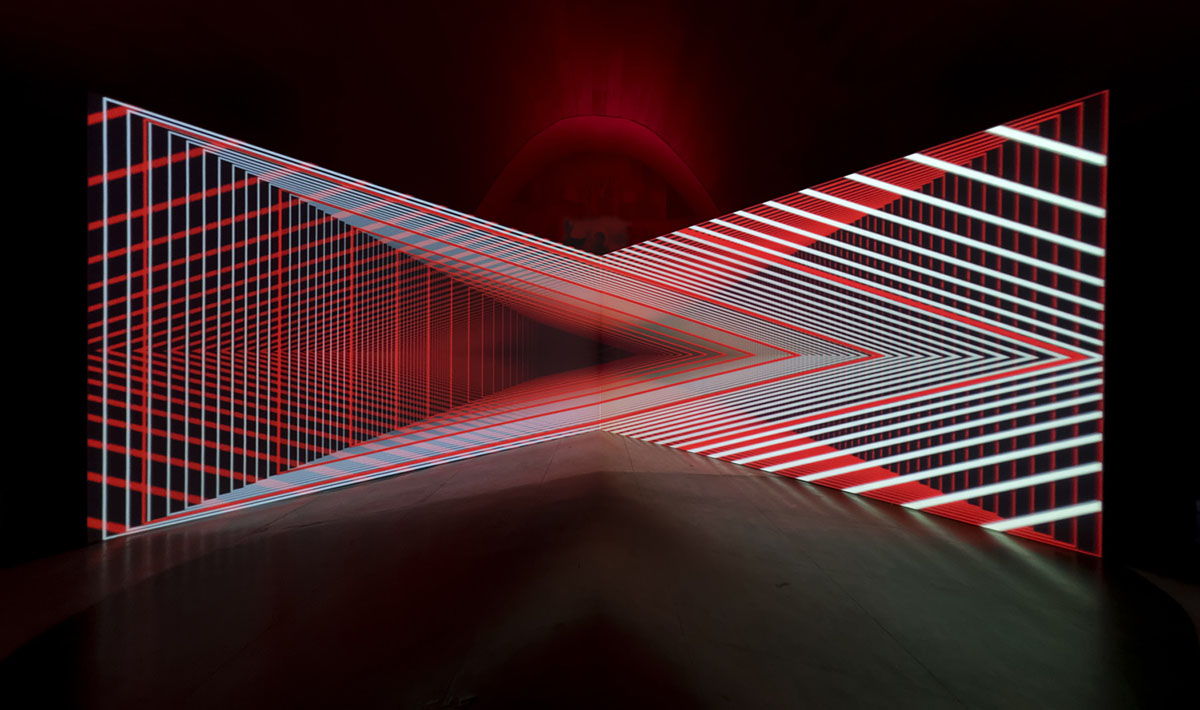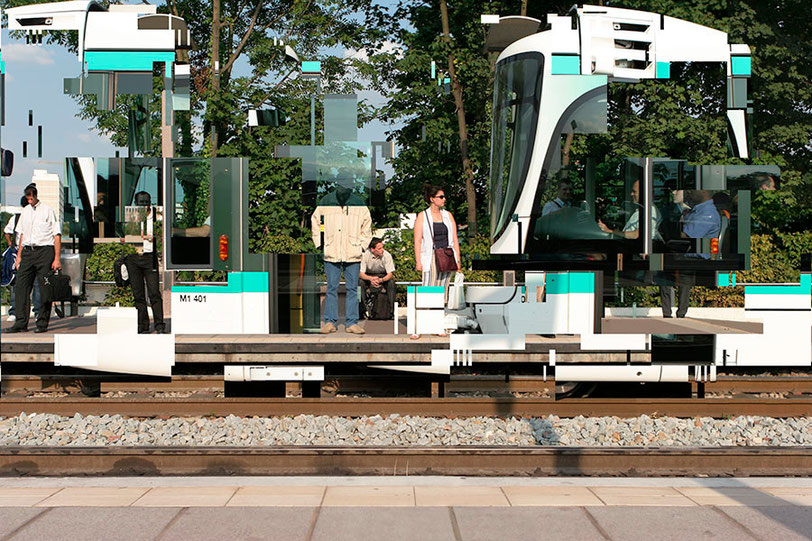Olivier Ratsi is a French visual artist whose work is mainly based upon representations of spatial perception and the experience of reality. He has developed a creative process based on the deconstruction of space and time. Deconstruction or fragmentation act mainly as an emotion trigger, which does not aim at showing what things could be, but more at questioning their references. He is one of the founding members of the visual label AntiVJ.
Can you talk about the overall concept behind your work?
My artistic process is primarily based on the perception of space. I consider objective reality, time, space and matter as intangible elements of information, and I use these notions to create installations that aim to question references of the perception of space.
In almost all of my works, I use a process that acts either as a revealer or a deconstructive mechanism. This process, which passes through sight, is like a bridge between my work and the viewer, so that each viewer can interact with the piece and extend the experience that it offers according to their own sensibilities.
Can you talk about AntiVJ? In what way do you think it has achieved what you set out for in the beginning?
Before meeting the future members of AntiVJ, I was going through a phase of visual experimentation in photography, VJing, audiovisual performance… It was after I met Yannick Jacquet, Romain Tardy and Joanie Lemercier, who were also questioning the concept of VJing, that we created the AntiVJ label in around 2007. The aim was to promote the artistic activities of each member through their personal projects.
We started to do mapping projection, working with 3D software and the concept of perspective. Meeting the other members and developing the label’s activities have allowed me to continue developing my own artistic process.
From this point of view, my work inherited at least two concepts that are directly linked to mapping and that have become the heart of my projects: perspective and anamorphosis.
What importance does perspective play in your work?
I have always had a fascination with the concept of vanishing points and optical perspective in the history of art.
My works essentially deal with space and the use perspective as a prop, or, at least, perspective yields the tangible objects that provide support for my pieces. Through creating processes that alter our field of vision or understanding, I override perspective conventions in order to break with the “normality” in front of us — that which seems obvious at first glance. Challenging perspective allows me to ask questions on many different levels about our own perceptions and the very possibility of existence.
My work wants to simulate an immaterial space in 3D through the use of video projectors on the walls of a room, space or architectural structure. It is not used to create a virtual extension of the existing space, but, rather, a new area where the vanishing points are no longer dependent on the exhibition space.
As well as using the same techniques (anamorphosis, vanishing points) for my projects, I also deal with the same subjects, namely the perception of space and our ability to see, watch and analyse our environment. My project Echolyse looks to dematerialise space through creating an illusion known as anamorphosis. The process of projecting onto a surface that isn’t flat, but which gives the appearance of being, is very important in my work.
What are “peelings”?
In the Echolyse project, to accentuate the optical illusion, I use what I call “peelings”, namely, hypnotic lines that sketch out the form that I wish to make appear.
“Peelings” is visual content created from a technique that I developed personally called perspective mapping. “Peelings” are created from spatial data from the projection surface, according to the perspective observed by the viewer, which I determine beforehand. These “peelings”, are projected using a traditional mapping technique through the walls of the installation.
These “peelings” create an illusion of depth that can only be seen when the viewer is standing in exactly the right place. The viewer should be both surprised but also able to understand how this visual effect comes about.
You mention that you are searching for a “different way of looking at space and time”. Could you elaborate?
Since my childhood, my relationship with space and time has always been a source of questioning. I’ve always had a deep admiration for people like Einstein, Newton or Muybridge who contributed to the advance of perception of our world.
Through my work, I’m trying to interrogate the perception of space and experience of reality. The WYSI*not*WYG project uses a deconstruction process through photographic artworks – taking and duplicating several pieces at different locations on the original image, and then assembling them in the same space as a different composition.
Another project called “Deconstruction Time, Again” explores the perception of time through chronophotographic content. The idea here is to reconstruct an image from multiple photographs, breaking the moving element into several plans, while sticking to a faithful representation of the fixed element.
In the Echolyse project, I create specific site installations using light and video projections, but the aim is the same. As a process I use the perspective and anamorphic technique.
The idea each time is that in order to share a different point of view with people I need to create a break with tangible reality. In other words, I would like to modify the type of information transmitted by the observed object, and received by the observer.
How do you cooperate with sound artists/musicians on a project? Is it usually the AntiVJ associated Thomas Vaquié? What importance does sound and music have for your works?
I usually work with Thomas Vaquié on different projects such as mapping or installations. Thomas Vaquié’s background is in sound design for films, therefore he knows how to listen to you. It’s a real pleasure to work with him. For example on the Onion Skin project, the sound design is as important as the visual content. I have created all visual content first and then gave it to him. Subsequently, Thomas Vaquié composed a musical score based on the movement of the “peelings”. The shape, speed, appearance, interaction, decomposition of each “peeling” contributes to an original soundtrack that reinforces this impression of volume and space.

